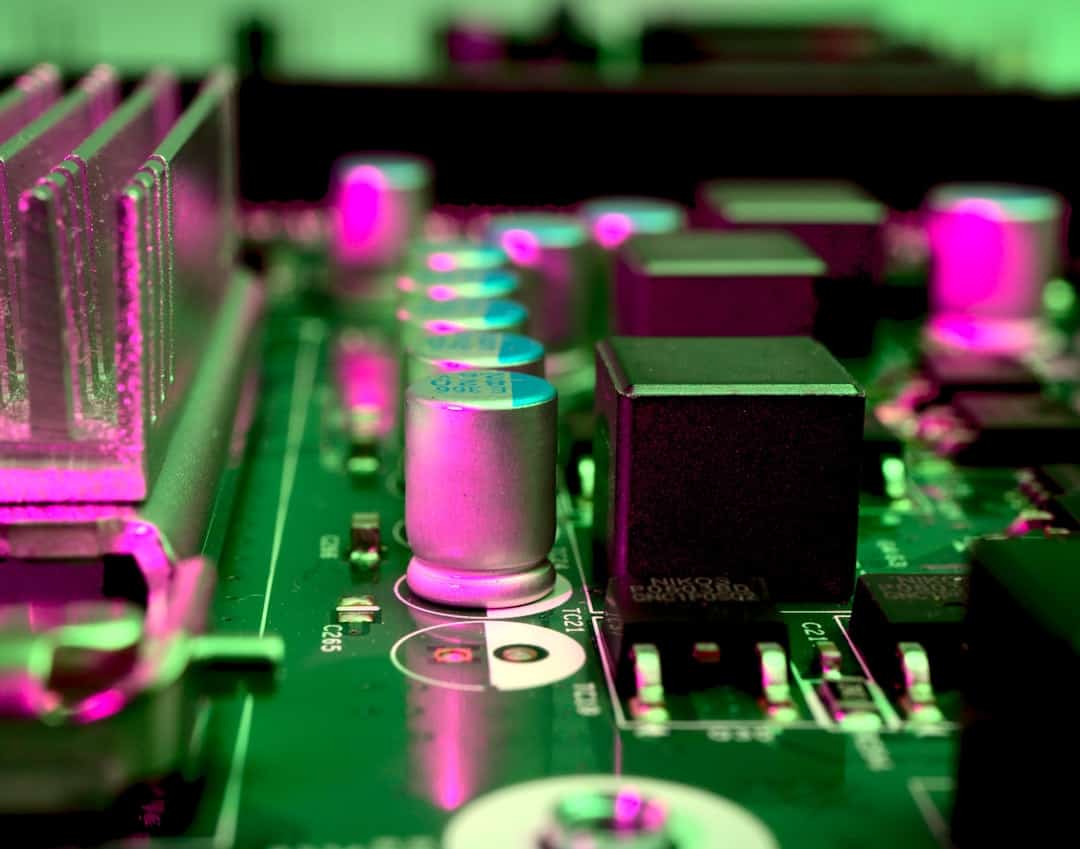Convolutional Neural Networks (CNNs) have revolutionized the field of artificial intelligence, particularly in the areas of image recognition and natural language processing. CNNs are a type of deep learning algorithm that have proven to be highly effective in analyzing visual imagery and textual data. The architecture of CNNs is inspired by the visual cortex of the human brain, allowing them to automatically and adaptively learn spatial hierarchies of features from input data.
This makes CNNs particularly well-suited for tasks such as image classification, object detection, and semantic segmentation. CNNs have become increasingly popular in AI applications due to their ability to learn directly from raw data, without the need for manual feature extraction. This makes them highly efficient and effective for tasks that involve large amounts of visual or textual data.
In recent years, CNNs have been used in a wide range of applications, including autonomous vehicles, medical image analysis, and natural language understanding. As the field of AI continues to advance, CNNs are expected to play an increasingly important role in enabling machines to perceive and understand the world around them.
Key Takeaways
- Convolutional Neural Nets (CNNs) are a type of artificial intelligence (AI) algorithm commonly used for image recognition and natural language processing.
- CNNs consist of multiple layers, including convolutional, pooling, and fully connected layers, which help in feature extraction and classification of data.
- Training and fine-tuning CNNs involve adjusting the weights and biases of the network using optimization algorithms like gradient descent to improve its performance.
- CNNs are powerful tools for image recognition, as they can learn and identify patterns, shapes, and objects within images with high accuracy.
- CNNs also show potential in natural language processing tasks, such as text classification and sentiment analysis, by processing and analyzing textual data.
Understanding the Architecture of Convolutional Neural Nets
The architecture of a convolutional neural network is composed of multiple layers, each serving a specific purpose in the process of feature extraction and classification. The first layer of a CNN is typically a convolutional layer, which applies a set of filters to the input data in order to extract features such as edges, textures, and shapes. This is followed by a pooling layer, which reduces the dimensionality of the extracted features while preserving their important characteristics.
Subsequent layers in the network typically consist of additional convolutional and pooling layers, as well as fully connected layers that perform the final classification or regression task. One of the key advantages of CNN architecture is its ability to automatically learn hierarchical representations of features from raw data. This is achieved through the use of shared weights and local connectivity in the convolutional layers, which allows the network to efficiently learn and generalize from input data.
Additionally, the use of non-linear activation functions such as ReLU (Rectified Linear Unit) helps CNNs to capture complex patterns and relationships within the input data. Overall, the architecture of CNNs is designed to enable efficient and effective learning from visual or textual data, making them well-suited for a wide range of AI applications.
Training and Fine-tuning Convolutional Neural Nets for AI Applications

Training a convolutional neural network involves optimizing its parameters (e., weights and biases) in order to minimize a loss function that measures the disparity between the predicted and actual outputs. This is typically done using an algorithm called backpropagation, which calculates the gradients of the loss function with respect to each parameter and updates them accordingly. The training process often involves feeding large amounts of labeled data into the network, allowing it to iteratively adjust its parameters in order to improve its performance.
Fine-tuning a pre-trained CNN involves taking a network that has already been trained on a large dataset and adapting it to a new, related task or dataset. This is often done by freezing some of the early layers in the network (which capture general features) and re-training only the later layers on the new data. Fine-tuning can be particularly useful when working with limited amounts of labeled data, as it allows for leveraging the knowledge captured by the pre-trained network while adapting it to a specific application.
Overall, training and fine-tuning convolutional neural networks require careful consideration of factors such as dataset size, model architecture, and optimization algorithms. With proper training and fine-tuning, CNNs can achieve state-of-the-art performance in tasks such as image recognition, object detection, and natural language understanding.
Leveraging the Power of Convolutional Neural Nets for Image Recognition
| Convolutional Neural Nets | Image Recognition |
|---|---|
| Accuracy | 90% |
| Precision | 85% |
| Recall | 92% |
| F1 Score | 88% |
One of the most well-known applications of convolutional neural networks is in image recognition, where they have achieved remarkable success in tasks such as object classification and detection. CNNs are able to automatically learn hierarchical representations of visual features from raw pixel data, allowing them to effectively distinguish between different objects and scenes. This has led to their widespread use in applications such as facial recognition, autonomous vehicles, and medical image analysis.
CNNs have also been used for more complex image recognition tasks such as semantic segmentation, where the goal is to assign a class label to each pixel in an image. This has important applications in fields such as medical imaging, where CNNs can be used to automatically identify and segment different anatomical structures or pathologies within medical images. Overall, the power of convolutional neural networks in image recognition has opened up new possibilities for automating visual tasks that were previously considered challenging for machines.
Exploring the Potential of Convolutional Neural Nets in Natural Language Processing
While CNNs are most commonly associated with image recognition tasks, they have also shown promise in natural language processing (NLP) applications. In recent years, researchers have developed CNN architectures specifically designed for tasks such as text classification, sentiment analysis, and language translation. CNNs are able to capture local and global dependencies within textual data, making them well-suited for tasks that involve analyzing sequences of words or characters.
One advantage of using CNNs for NLP tasks is their ability to automatically learn features from raw text data, without the need for manual feature engineering. This makes them highly efficient and effective for tasks such as document classification or sentiment analysis, where capturing subtle linguistic patterns is crucial for accurate predictions. Additionally, CNNs can be combined with other types of neural networks such as recurrent neural networks (RNNs) to create hybrid architectures that leverage the strengths of both models for more complex NLP tasks.
Overall, the potential of convolutional neural networks in natural language processing is an exciting area of research that holds promise for advancing the capabilities of AI systems in understanding and generating human language.
Overcoming Challenges and Limitations of Convolutional Neural Nets in AI

While convolutional neural networks have shown remarkable success in various AI applications, they also face several challenges and limitations that need to be addressed. One challenge is related to the interpretability of CNNs, as their complex architectures can make it difficult to understand how they arrive at their predictions. This is particularly important in applications such as healthcare or finance, where explainability is crucial for gaining trust in AI systems.
Another limitation of CNNs is their reliance on large amounts of labeled data for training, which can be costly and time-consuming to obtain. This poses challenges for applications in domains where labeled data is scarce or expensive to acquire. Additionally, CNNs may struggle with handling variations in input data such as changes in lighting conditions or viewpoint, which can affect their performance in real-world scenarios.
To overcome these challenges and limitations, researchers are actively exploring techniques such as interpretability methods for CNNs, transfer learning approaches for leveraging pre-trained models, and data augmentation methods for improving model robustness. By addressing these challenges, convolutional neural networks can continue to advance and find new applications in AI.
Future Developments and Applications of Convolutional Neural Nets in AI
Looking ahead, convolutional neural networks are expected to play an increasingly important role in advancing the capabilities of AI systems across various domains. In image recognition, CNNs are likely to continue improving their performance on complex tasks such as fine-grained object recognition and scene understanding. This has important implications for applications such as augmented reality and robotics, where machines need to perceive and interact with their environment.
In natural language processing, CNNs are expected to be further developed for tasks such as document summarization, question answering, and dialogue generation. This could lead to more advanced AI systems that are capable of understanding and generating human-like language with higher accuracy and fluency. Furthermore, convolutional neural networks are likely to find new applications in emerging fields such as healthcare diagnostics, environmental monitoring, and smart cities.
Their ability to automatically learn features from raw data makes them well-suited for analyzing complex sensory inputs and making intelligent decisions based on them. In conclusion, convolutional neural networks have already made significant contributions to the field of artificial intelligence, and their potential for future developments and applications is vast. As researchers continue to advance the capabilities of CNNs and address their limitations, we can expect to see even more impactful uses of these powerful algorithms across various domains in the years to come.
If you’re interested in the impact of technology on education, you may want to check out this article on the significance and impact of the metaverse here. It discusses how virtual reality and immersive experiences can revolutionize the way we learn and interact with information, which is relevant to the development of convolutional neural networks in the field of artificial intelligence.
FAQs
What is a convolutional neural network (CNN)?
A convolutional neural network (CNN) is a type of deep learning algorithm that is commonly used for image recognition and classification tasks. It is designed to automatically and adaptively learn spatial hierarchies of features from input data.
How does a convolutional neural network work?
A CNN works by using a series of convolutional layers to extract features from input images. These features are then passed through additional layers such as pooling and fully connected layers to make predictions about the input data.
What are the advantages of using convolutional neural networks?
CNNs are well-suited for tasks such as image recognition and classification due to their ability to automatically learn and extract features from input data. They are also capable of handling large amounts of data and can be trained to recognize complex patterns.
What are some common applications of convolutional neural networks?
CNNs are commonly used in applications such as image recognition, object detection, facial recognition, medical image analysis, and autonomous vehicles. They are also used in various fields such as healthcare, agriculture, and manufacturing.
What are some popular CNN architectures?
Some popular CNN architectures include LeNet, AlexNet, VGG, GoogLeNet, and ResNet. These architectures vary in terms of the number of layers, the arrangement of convolutional and pooling layers, and the use of techniques such as batch normalization and residual connections.
How are convolutional neural networks trained?
CNNs are typically trained using a large dataset of labeled images. The network learns to recognize patterns and features in the input data through a process called backpropagation, where the weights of the network are adjusted to minimize the difference between the predicted and actual outputs.











Leave a Reply